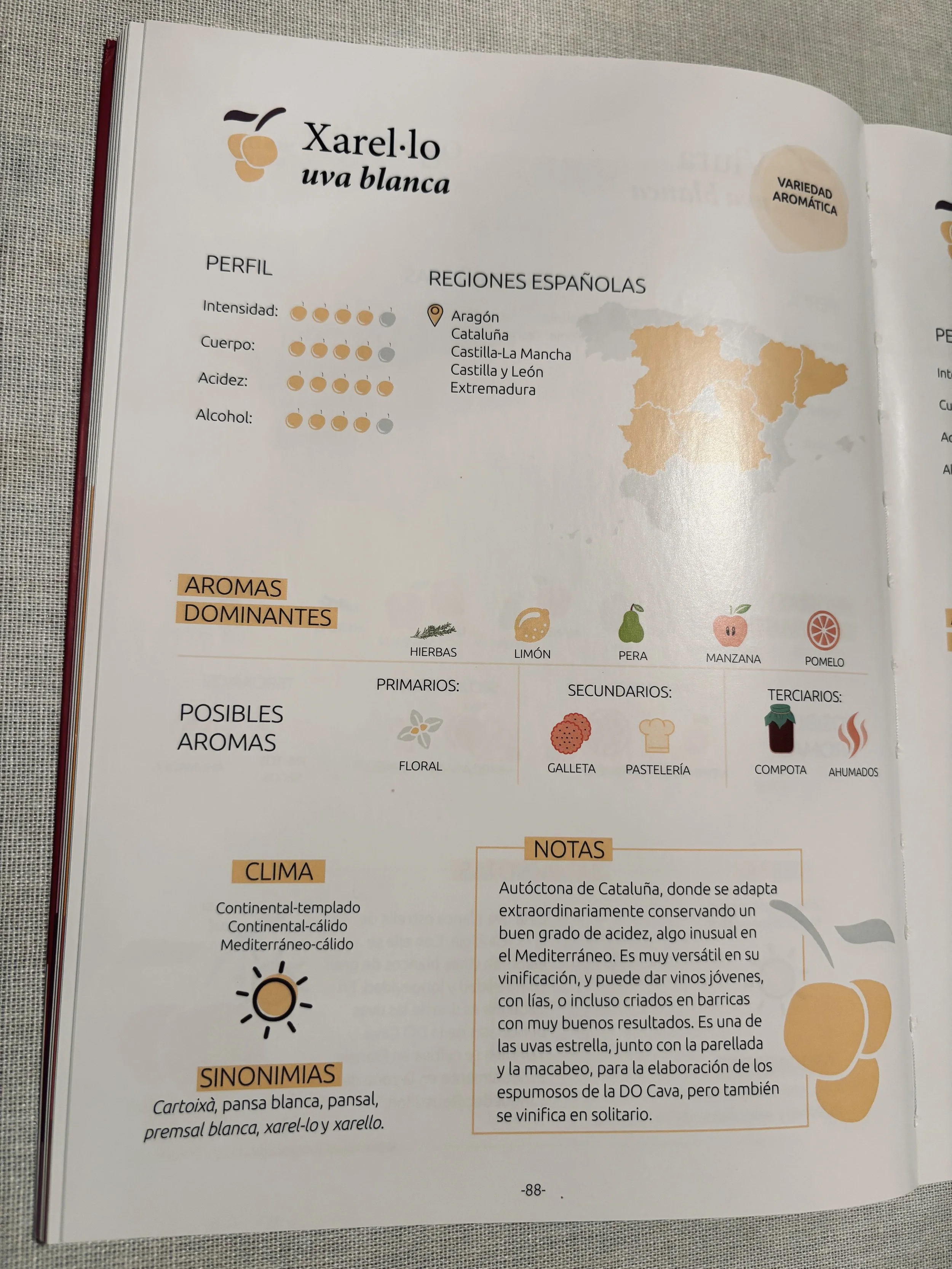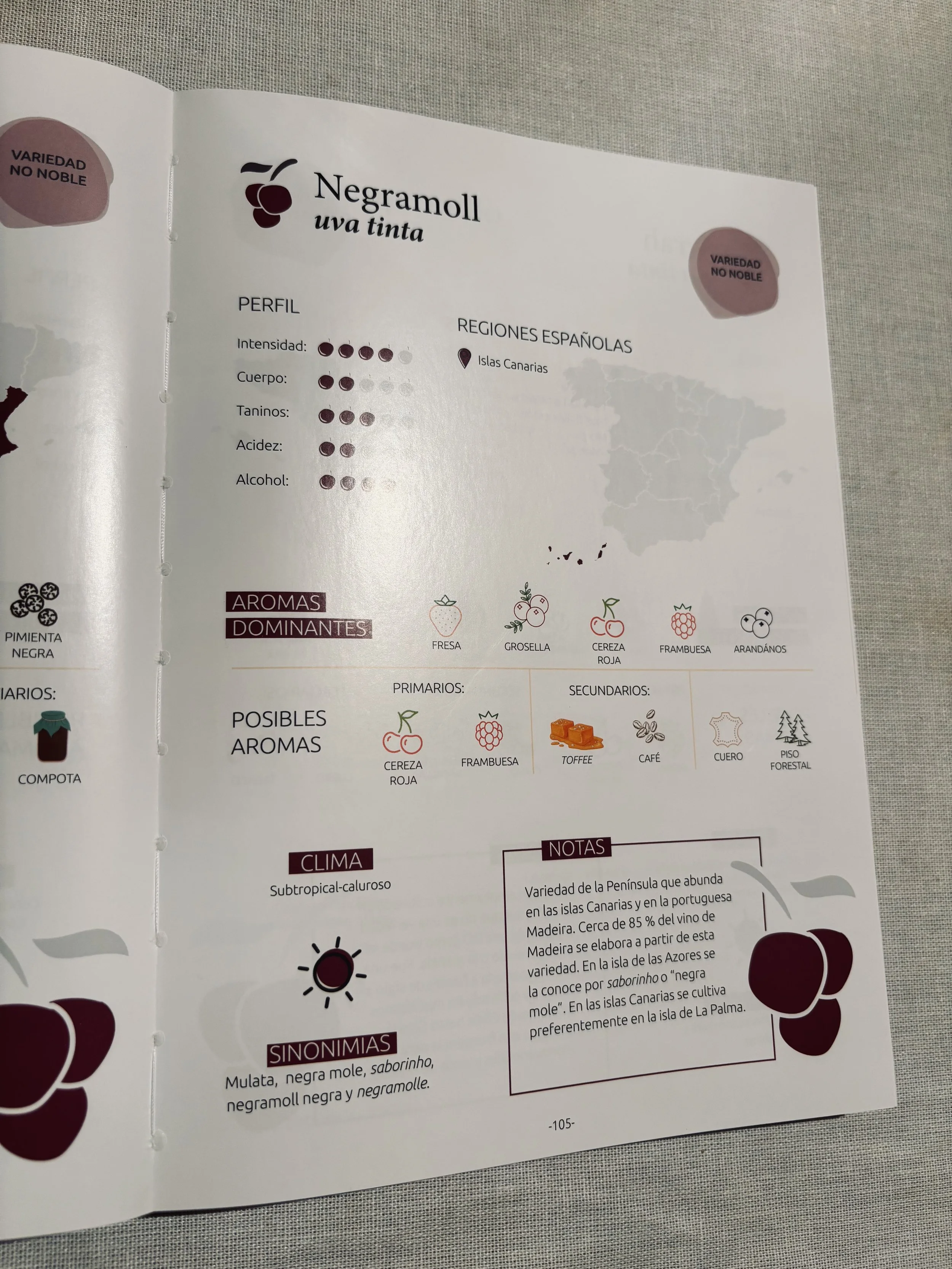Vinalogando por España: La guía para entender de vinos en el país
Bill Bolloten reviews Vinalogando por España, a new book that guides readers through the complexities of the Spanish wine world.
Vinalogando por España: La guía para entender de vinos en el país by Jaqueline D’Hipólito Dartora
Published by The Baco Science (2025)
336 pages
Price: €34.86
Available from The Baco Science
Jaqueline D’Hipólito Dartora has written a comprehensive and insightful guide that will appeal to enthusiasts of Spanish wine at all stages of their journey.
A certified sommelier, holder of the WSET Level 3 accreditation and founder of the Vinálogos proyect, Jaqueline set out, in her words, to “create a basic guide for anyone who loves Spanish wine and wants to understand it better.”
Whilst acknowledging the complexity of Spanish viticulture, she has created a resource informed by deep research that is accessible and easy-to-use. No matter where you decide to dip in, it will ignite curiosity and ratchet up your understanding.
The book opens with a sequence of concise chapters that cover a range of introductory aspects such as wine tasting basics, proper storage, common wine faults, serving wine, the principles of food and wine pairing, and the methods used to make various wine styles.
These opening sections transition to the book’s core themes: the diversity of indigenous grape varieties and coverage of Spain’s wine-producing regions.
The book profiles 40 grape varieties - 24 white and 16 red - each featured on a dedicated page. For every variety, readers will find details on the regions where it's grown, its aromatic characteristics, preferred climate and commonly used synonyms. Additional notes offer deeper insights.
Spain’s wine-producing regions are organized according to the country’s various autonomous communities. While many of these regions contain multiple Denominaciones de Origen (DOs), some are represented solely by a Protected Geographical Indication (PGI).
Every two-page spread includes a map, details about climate and soil, key grape varieties and the primary styles of wine produced.
The graphic design plays a crucial role in how the information is conveyed to the reader. Boxouts also offer details on historical contexts, intriguing facts and curiosities, and even literary references. The visual design also ensures that the information remains approachable for readers who may not be fluent in Spanish.
One of the book’s strengths is its focus on lesser-known regions, giving space and prominence to areas such as Cangas in Asturias and even the small town of Lebrija in Andalusia.
To conclude, the book features a glossary covering key terminology related to Spanish wine.
The only element I feel the book lacks is a series of pointers to standout producers in each region. For that, stay tuned: my forthcoming book review will feature a recently released title that fills this gap admirably.
I recently had the chance to chat with Jaqueline about her book.
Why did you write this book and who is it aimed at?
Since I became interested in wine, I have been looking for guides that would make my learning process easier. In 2015, on a trip I made to Brazil to see my family, I came across a Portuguese translation of the book Wine Folly in a bookstore, and I thought it was great. This book opened my horizons to the world of wine, and from then on, everything flowed more easily.
I was looking for something similar in Spain and never found it. When I started my sommelier training this idea didn’t go away, and I set myself a goal that when I finished the course, I would write the book I would like to have found when I entered the world of wine. I was thinking of all those people who want to learn a little more, but in an easier and more dynamic way. The wine world is complex, and I wanted to simplify it somehow.
Jaqueline D’Hipólito Dartora, author of Vinalogando por España
Vinalogando: what does the title mean?
Vinálogos is the name of my blog. It’s a wordplay combining the words wine + dialogues/knowledge. I think that when we have a glass of wine, with our friends or even alone, what we do is vinalogar, because the wine tells you a story, and you listen to it. Vinalogando, in its gerund form means just that: “dialoguing with the wine/wineloguing”, a way I found to transmit in one word what the wine says to me, to us.
As you say in the book, the Spanish wine world is boundless and you only cover the ‘tip of the iceberg’. What did you particularly aim to include?
I thought it was important to give people some structure. I include a basic guide to tasting, storing wine, how long it lasts once opened, serving temperature, and, of course, food pairings, all focused on Spanish cuisine.
I also thought it was essential to include aromatic profiles of the grapes that are representative of Spanish viticulture, as this information is not easily available. It took extensive research, drawing from the work of renowned authors such as Jancis Robinson, Oz Clarke and Pedro Ballesteros.
Finally, and in my opinion it’s one of the key parts of the book, I decided to organise the wines by each Spanish autonomous community and, within each one, include information about the Protected Designations of Origin (PDO). So when someone goes on a trip, they know which DOs are near and what to try.
A key feature of the book is that you cover grape varieties and PDOs across all of Spain’s autonomous communities. Why did you aim to create such a detailed overview?
The idea was to give the reader as much information as possible, but in a simple and accessible way. To understand Spain's potential and see that this country has incredible diversity.
Few people know that Spain has the largest vineyard area in the world, and that almost all of the autonomous communities have at least one PDO. Even I was surprised to learn that. When I started my research I discovered a lot of things I didn't know and needed to contact DOs to make sure that what I was writing was correct.
The design of the book, and the use of graphics, is crucial to how you have decided to communicate information. Can you say more about how you approached this?
For me, it’s key to how the book works. There are many books written about Spanish wine and I consulted many of them as part of my research. The challenge was how to help wine lovers and enthusiasts learn more about Spanish wine without requiring too much effort.
I wanted to make it straightforward as possible. I hope I've succeeded. With the layout on every page I have tried to convey clear information without the need for excessive text. Basically, as Madeline Puckette did in her day with Wine Folly.
What's next for your Vinálogos project?
I have several ideas in mind that I would like to develop, but first I want to finish my WSET Diploma. I can't do everything at once, and the WSET Dip is quite demanding. It involves hours of study every day alongside all my other activities. Plus, keeping up to date in the sector is a job in itself.
For now, I'm keeping the blog alive and active, and I interview wine personalities from time to time. I'm also working on a newsletter with blog posts and wine industry news.
But yes, I do have plans for the future, no doubt about it.






